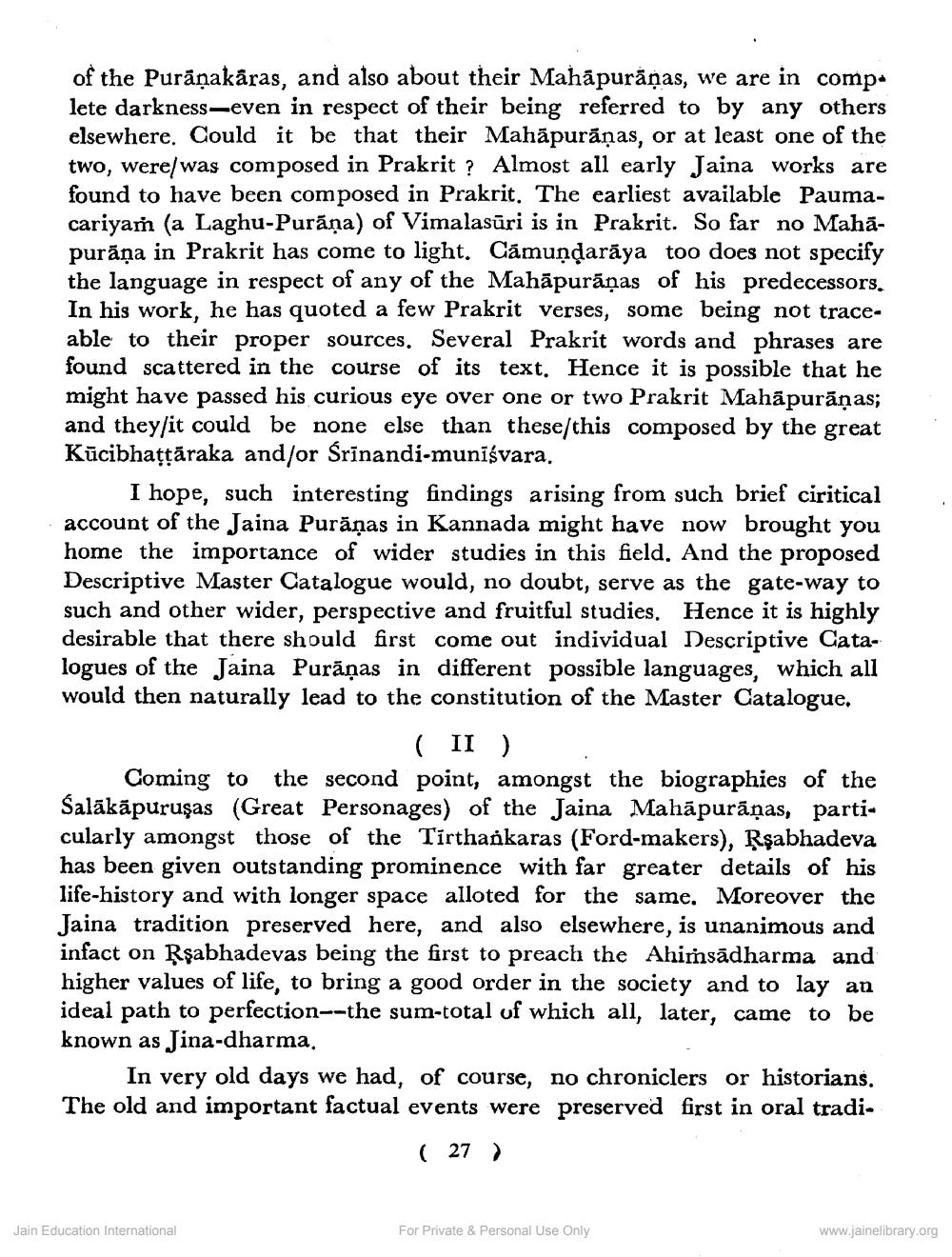________________
of the Purāņakaras, and also about their Mahāpurāņas, we are in comp. lete darkness-even in respect of their being referred to by any others elsewhere. Could it be that their Mahāpurăņas, or at least one of the two, were/was composed in Prakrit ? Almost all early Jaina works are found to have been composed in Prakrit. The earliest available Paumacariyam (a Laghu-Purāņa) of Vimalasūri is in Prakrit. So far no Mahapurāņa in Prakrit has come to light. Cámundarāya too does not specify the language in respect of any of the Mahāpuräņas of his predecessors. In his work, he has quoted a few Prakrit verses, some being not traceable to their proper sources. Several Prakrit words and phrases are found scattered in the course of its text. Hence it is possible that he might have passed his curious eye over one or two Prakrit Mahāpurāņas; and they/it could be none else than these/this composed by the great Kūcibhațţăraka and/or Śrīnandi-munīśvara.
I hope, such interesting findings arising from such brief ciritical account of the Jaina Puranas in Kannada might have now brought you home the importance of wider studies in this field. And the proposed Descriptive Master Catalogue would, no doubt, serve as the gate-way to such and other wider, perspective and fruitful studies. Hence it is highly desirable that there should first come out individual Descriptive Catalogues of the Jaina Puranas in different possible languages, which all would then naturally lead to the constitution of the Master Catalogue,
( II ) Coming to the second point, amongst the biographies of the Salākāpuruşas (Great Personages) of the Jaina Mahāpurāṇas, particularly amongst those of the Tirthaakaras (Ford-makers), Rşabhadeva has been given outstanding prominence with far greater details of his life-history and with longer space alloted for the same. Moreover the Jaina tradition preserved here, and also elsewhere, is unanimous and infact on Rşabhadevas being the first to preach the Ahimsādharma and higher values of life, to bring a good order in the society and to lay an deal path to perfection--the sum-total of which all, later, came to be known as Jina-dharma.
In very old days we had, of course, no chroniclers or historians. The old and important factual events were preserved first in oral tradi.
( 27 )
Jain Education International
For Private & Personal Use Only
www.jainelibrary.org




